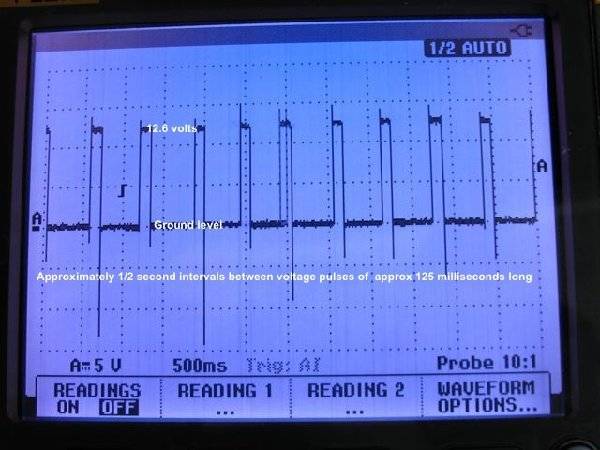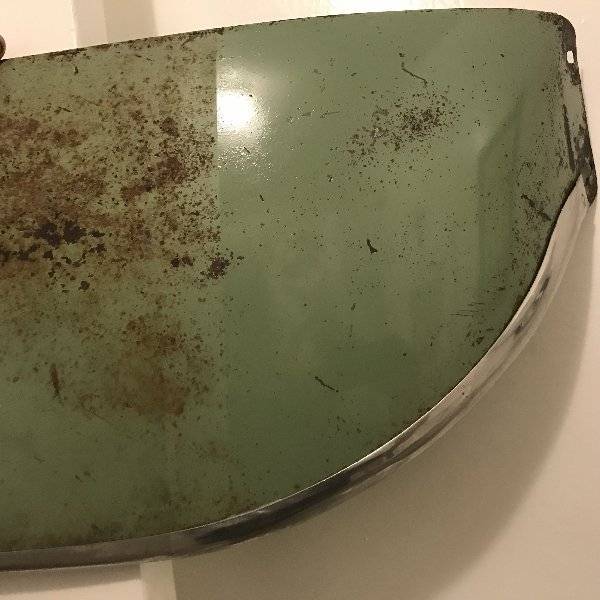|
Re: Saving the original paintwork and trunk emblem - 1951 200 barn findand
|
||||
|---|---|---|---|---|
|
Home away from home

|
Another alternative is to get a Buck or similar 12V to 6V electronic step down power supply and attach it to the clock. There are also Ford and Packard boxes which were used to power the 5/6V instruments in the 1950s 12V cars/trucks. They obviously cost more and have multiple connections for instruments. The Buck is much cheaper, but more than a buck! I'm about to fit one to the clock in my 1941 120 Club Coupe, which was converted to 12V (sort of) by somebody else. The clock still works but would not for long on 12V.
Cheers Brian
Posted on: 2019/5/24 21:16
|
|||
|
1941 120 Club Coupe (SOLD)
1956 Clipper Deluxe (RHD and auto) - for the wife, or so I told her! |
||||
|
||||
|
Re: Saving the original paintwork and trunk emblem - 1951 200 barn findand
|
||||
|---|---|---|---|---|
|
Forum Ambassador
|
Quote:
Another alternative is to get a Buck or similar 12V to 6V electronic step down power supply and attach it to the clock. There are also Ford and Packard boxes which were used to power the 5/6V instruments in the 1950s 12V cars/trucks. Some kind of a step down converter might be good for a clock but I don't think the older Ford and Packard instrument regulator would work. Those are just an on/off contact operated by a heater and bimetal strip. They turn 12v on and off with the frequency and duration of the on time depending on the load so that the average voltage out seen by the bimetal heaters in the gauges is about 5v. The burst of the clock winding pulse is so brief I would suspect that it would be over before the heater could get the bimetal strip in the regulator hot enough to open the contact so the clock would still see 12v. Not sure how many versions of small amp Buck converters are readily available but most of the commonly found inexpensive solid state converters are only rated for steady demand resistive items like lights and some electronics etc. I would be sure to use one rated for coil and motor use so it has the extra protection for back emf voltage when the field collapses and can also handle the heavy surge without tripping when the contacts energize the coil. Most will say what they can be used with and have something like "not for use with motors or warranty void if used with inductive devices" if they can't handle them. The old vibrator style 6v radios are also inductive devices and will pull a lot of current too. An ordinary resistor would probably work too. 5th Avenue Garage might have one on their 12v conversion page rated for use with clocks. Here is what the output of the Packard instrument regulator looks like when connected to 3 gauges.
Posted on: 2019/5/24 21:48
|
|||
|
Howard
|
||||
|
||||
|
Re: Saving the original paintwork and trunk emblem - 1951 200 barn findand
|
||||
|---|---|---|---|---|
|
Home away from home

|
@Brian and @Howard thanks a lot I really appreciate your help!
Posted on: 2019/5/25 0:57
|
|||
|
1951 200 Deluxe Sedan Valiant Green Metallic
Vehicle #:2462 8372 |
||||
|
||||
|
Re: Saving the original paintwork and trunk emblem - 1951 200 barn findand
|
||||
|---|---|---|---|---|
|
Home away from home

|
Gave the visor paint a little attention - here's a 50/50
Short and a lil video <iframe width="560" height="315" src="https://www.youtube.com/embed/QFV8dyk7ksY" frameborder="0" allow="accelerometer; autoplay; encrypted-media; gyroscope; picture-in-picture" allowfullscreen></iframe>[
Posted on: 2019/5/25 1:28
|
|||
|
1951 200 Deluxe Sedan Valiant Green Metallic
Vehicle #:2462 8372 |
||||
|
||||
|
Re: Saving the original paintwork and trunk emblem - 1951 200 barn findand
|
||||
|---|---|---|---|---|
|
Home away from home

|
Jason, the YouTube link keeps taking me to a Muppets video......
 
Posted on: 2019/5/25 17:26
|
|||
|
Paul
www.studebakerskytop.com |
||||
|
||||
|
Re: Saving the original paintwork and trunk emblem - 1951 200 barn findand
|
||||
|---|---|---|---|---|
|
Home away from home

|
@Paul - now that's funny, I screwed That one up 🧔🏻🔫
Posted on: 2019/5/25 17:41
|
|||
|
1951 200 Deluxe Sedan Valiant Green Metallic
Vehicle #:2462 8372 |
||||
|
||||
|
Re: Saving the original paintwork and trunk emblem - 1951 200 barn findand
|
||||
|---|---|---|---|---|
|
Home away from home

|
Jason, Howard knows a lot more about this than I do. The Buck step down device I have is supposedly rated for things like small electric motors (not all are). It has an overall capacity of 18W and standard output of 3A at 6V. There is already a fuse in the power circuit for the clock, so I'll put something in there for extra protection. Any advice, Howard? I guess it should be a pretty small one. Don't know what sort of current the clock motor would draw. As I understand it, the electric motor winds the clock so it's quite unlike a modern quartz movement and actually makes a ticking sound. Silence would be a clue to the presence of a quartz movement - or a deceased clock!
Will get around to fitting this soon (when I put away the clean up stuff for my 56 Clipper). Will let you know how it goes. Cheers Brian
Posted on: 2019/5/25 18:04
|
|||
|
1941 120 Club Coupe (SOLD)
1956 Clipper Deluxe (RHD and auto) - for the wife, or so I told her! |
||||
|
||||
|
Re: Saving the original paintwork and trunk emblem - 1951 200 barn findand
|
||||
|---|---|---|---|---|
|
Forum Ambassador
|
Clock fuse is rated at 3 amps for 40 120 models. The clock is actually a spring wound mechanical device and the winding is done by an electromagnet. The coil has a fairly good surge amp draw but probably not more than 1-2 amps.
Winding is by an armature piece with a metal pole section connected to a ratchet mechanism which is in turn connected to the clock works. The armature is connected to and pulled by a spring and that spring is what provides the energy for the clock thru the locked ratchet direction. As the spring pulls and clock winds down, the armature pole moves away from the electromagnet until it reaches a point where a set of snap action contacts are activated. When the contacts make, the electromagnet is energized and pulls the armature in the freely moving ratchet direction back to the starting point stretching the spring in the process. As soon as the armature started to move back the contacts snap open again but in the brief period they were closed the strong pull provided by good voltage to the electromagnet and inertia from the weighted armature pole is enough to have the armature move full range. That cycle is the click that repeats every 10-20 seconds depending on the clock. One symptom of a low battery is the magnet is not at full strength so the armature is not pulled as far and the click cycle starts getting very short as it winds down quicker. When the battery is too weak to move the armature the contacts will stay closed and is generally what causes the points to burn and fail and if lucky, the fuse will blow before damage to the electromagnet is done. That would be one thing I would be interested to hear on how the Buck converter does. Is the instantaneous or surge amps out and internal wire size sufficient for the electromagnet to pull enough current to do a full stroke.
Posted on: 2019/5/25 18:51
|
|||
|
Howard
|
||||
|
||||
|
Re: Saving the original paintwork and trunk emblem - 1951 200 barn findand
|
||||
|---|---|---|---|---|
|
Home away from home

|
Wow Howard, thanks for taking the time to educate me/us 👨🏼🏫 - class dismissed!!! 👨🏻🎓
Posted on: 2019/5/26 16:30
|
|||
|
1951 200 Deluxe Sedan Valiant Green Metallic
Vehicle #:2462 8372 |
||||
|
||||

 (0.00 KB)
(0.00 KB)

 (44.64 KB)
(44.64 KB)








